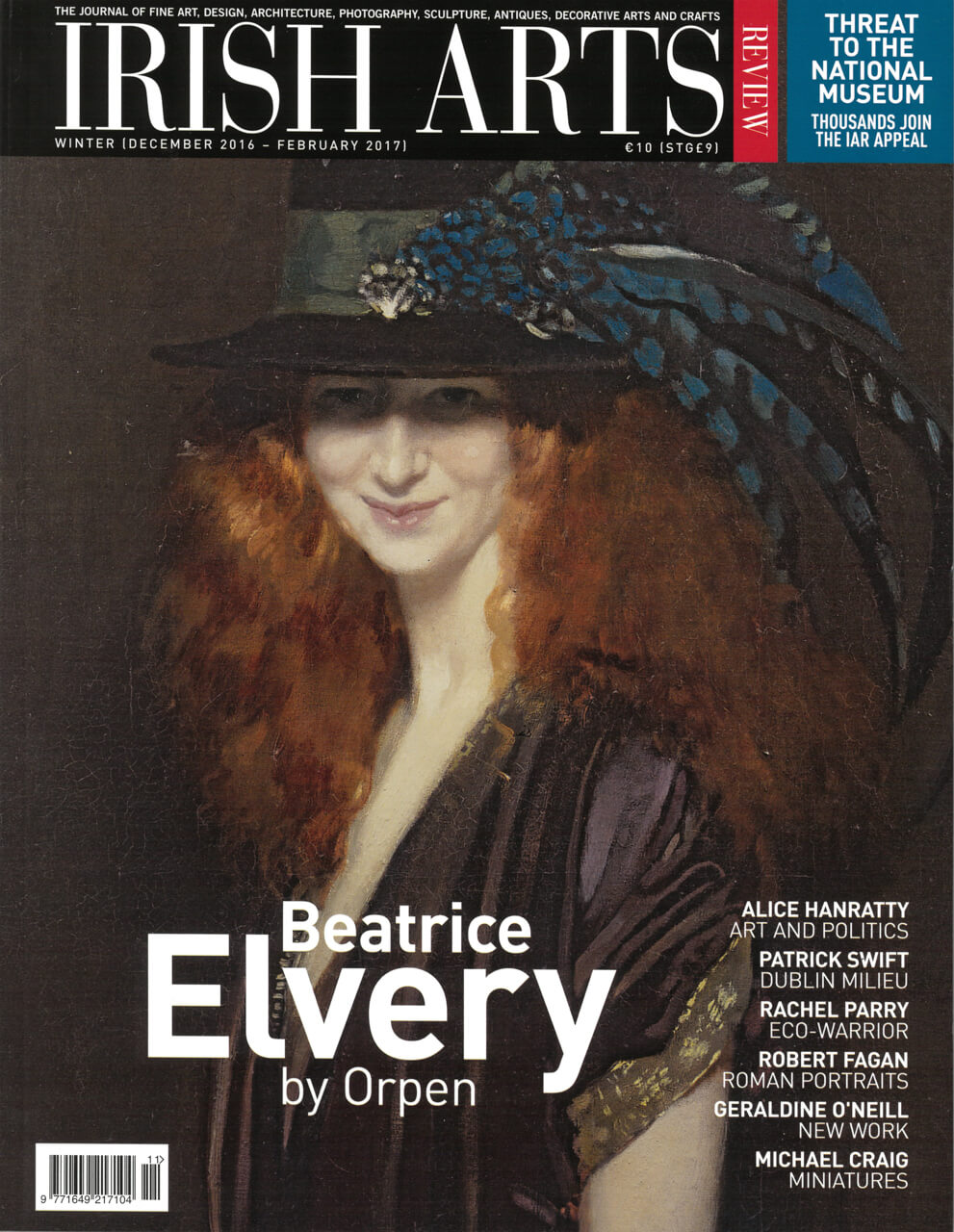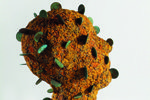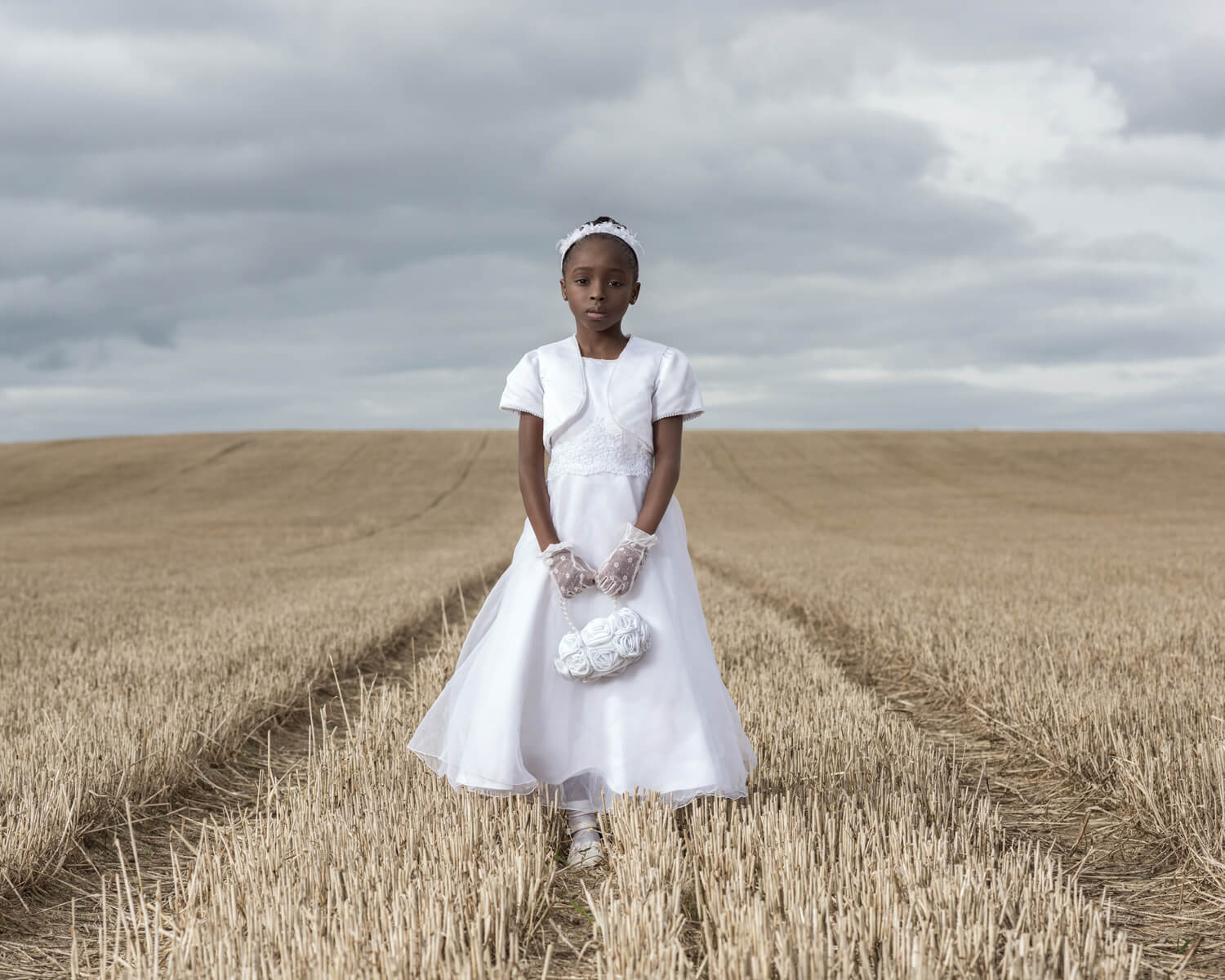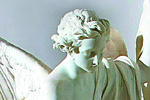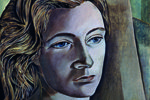
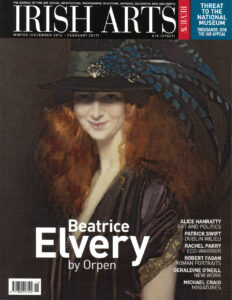
Brian Fallon recalls the artist and writer Patrick Swift, who lingered in the memories of Dublin’s literati as a potent presence long after his departure for the Continent.
Patrick Swift is a solitary figure in Irish art and occupies a position – if you can even call it that – which remains well off the trodden track. He has had some followers here, including Edward McGuire who told me repeatedly that Swift was the starting point of his own career as a painter. Yet his close friends tended to be more often writers than painters; he had a highly developed literary sense and wrote freely not only about individual artists and art, but also about aesthetics and creativity in general. He would, in all probability, have made an excellent lecturer of a certain kind, but today this role is almost inseparable from academic life and Swift would never have fitted comfortably into the modern university or art college. A chosen circle of friends and/or followers might have suited him better, though he did not seek one out and ended up living and working in a foreign country (Portugal) where he died prematurely, almost forgotten in his homeland.
I never met Swift in person – he had vanished from Dublin by the time I went to live and work in the city – but he created something of a personal legend and continued for at least a decade to be a kind of potent presence there. Like so many of his contemporaries, he had a troubled relationship with his native country and spent most of his mature years abroad. Yet he never wholly cut himself off from it, even if he had only a single exhibition in Dublin (at the Victor Waddington Galleries in 1952) and then more or less opted out of the Irish art world. He spent several years in London, painting, writing but not exhibiting, only to quit that in turn for a sunnier clime in Portugal and run a successful pottery there.
He was above all a man of the 1950s, a decade which is largely misunderstood today and sometimes ignorantly dismissed for being what it was not. The Second World War was slowly – very slowly – passing into history but its shadow remained, while the Cold War had created a kind of cultural permafrost that affected any thinking person. Times were hard in Ireland and emigration was not only an abiding spectre, it was an unavoidable socio-economic fact. Literary censorship remained strong, buyers for art were few and the great dealer Victor Waddington – who had given Swift his first exhibition – emigrated to London. In politics the age of de Valera was nearing its end, while his successors – Seán Lemass apart – proved to be men of very limited outlook and capacity. The Catholic Church seemed incapable of changing its ways and had antagonized the bulk of the writers and artists and, indeed, the intelligentsia. This gave the decade a certain greyness and sense of frustrated aspiration, even if many fought hard against such a fungoid growth.
Among painters Jack Yeats was, of course, still the Grand Old Man but he was a rather remote figure to Swift’s generation: Paul Henry’s later work was mostly tame repetition. Seán Keating and his fellow RHAs were widely regarded as reactionaries, while the Irish Exhibition of Living Art already showed some hardening of the arteries and was largely dominated by a middle-ageing clique1. It was with the IELA, nonetheless, that Swift showed his early work and quickly earned the interest of newspaper critics, among others. He in turn respected certain of the older Living Art figures – notably Nano Reid who did not, however, return the compliment. (I can quote her personally on this, since she told me once of the disappointment and even embarrassment she felt when shown his work in some quantity by Swift’s glamorous American girl-friend, Claire McAllister (Fig 2) – in Swift’s Dublin studio, as I remember.2
Overall, however, the generation of Reid, Gerard Dillon, Patrick Collins, Louis le Brocquy, George Campbell, Norah McGuinness, Patrick Hennessy, Daniel O’Neill, Colin Middleton et alii represented something very different from his own. In the first place, Swift had only a limited interest in the Irish countryside; like most of the new Irish writers, he was more oriented towards urban life – particularly its bohemian or unorthodox side.3 Neither religion nor mythology meant much to him or any of his associates. Romantic nationalism repelled rather than attracted them; his generation tended to be consciously anti-Romantic, and two world wars had shaken faith in almost all political ‘isms’. Joyce’s Ulysses became virtually the New Testament of the younger generation, rather than Yeats who sounded too Romantic and too magniloquent, not to say old-fashioned. And Beckett’s Waiting for Godot, when it appeared, seemed in itself to sum up a whole period ethos, just as Maeterlinck’s Pelléas et Mélisande had hit the nerve centres of the 1890s.
One positive effect of this disenchantment is that it did force Irish artists, writers and critics – or at least a certain core of them – into a kind of offensive/defensive solidarity, even if much of the traditional clique warfare persisted. The Dublin literary pubs were one obvious rallying point, but a more effective outlet was the literary and art media in so far as these existed. The ageing Dublin Magazine allowed little space to the visual arts but The Bell, though it did not print art reproductions, offered an opening to good polemic writing on diverse topics. Above all, however, John Ryan, editor of the rather short-lived Envoy was a painter in his own right, and a man who was also aware of developments well outside Ireland. Swift became Ryan’s brother-in-law and friend, and he began to exercise his polemical and literary bent in a number of periodicals, including Envoy itself and the Quarterly Review.
One thing that should be said, in advance, is that Swift was not a natural-born writer-journalist, though by hard work and sheer professionalism he made himself a readable and challenging one. Some men are born with an ear for prose, just as others (too few, alas) are born with an ear for verse; the easy nonchalance of Myles na gCopaleen’s Cruiskeen Lawn column, for instance, obviously came to him by nature even if he polished it up a good deal. On the obverse side, Seán √ì’Faoláin was a penetrating essayist, literary critic and socio-political analyst, but his prose too often reads like a rather awkward translation from some other language than English. It is by his thinking power, not his literary style, by which he survives. And Swift’s critical and polemical articles/essays are still readable and relevant not because he was a master of prose – he wasn’t – but because he possessed an exceptionally good intellect as well as an artist’s inborn sensitivity. His criticism of his contemporaries, for instance, has stood up well in the main and those whom he championed – verbally and privately as well as in print — include Francis Bacon, Lucian Freud, Frank Auerbach, Craigie Aitchison, David Bomberg and even the great Giacometti. He also had the courage to stand up against the tidal wave of abstract art, which from being a minority taste had begun to exercise a virtual monopoly over official or even fashionable opinion – rather like the near-monopoly which twelve-tone music threatened for a time to exercise in most European countries. Swift was not automatically prejudiced against abstraction, but he argued convincingly that the Western tradition was a good deal too varied and complex to be compressed into a single channel or idiom.
One of his finest essays, however, deals not with any contemporary or near-contemporary but with the Baroque master Caravaggio.4 Caravaggio when Swift tackled him was still a thorny subject, and Baroque itself was only coming into reconsideration very slowly. (His alleged homosexuality, though probably untrue, added to the difficulty; homosexuality in the 1950s was still a dangerous area). For a start, Swift admits that he still finds him a lesser artist than Rembrandt, yet in certain ways closer and more relevant. He had a natural insight into the Catholic/pagan dichotomy at the heart of Caravaggio’s complicated nature, his mixture of common humanity (or humanism) with violence and cruelty, and the way in which High Theatre and emotional sincerity go hand-in-hand instead of being contradictory.
While Swift had little time for aestheticism as such, he stressed over and over that painting was an autonomous art and should not be conscripted into the role of propaganda. This, of course, was one of the central controversies of the 1950s, when the Marxist writer John Berger had a big following through his writings in the New Statesman and elsewhere. Swift had nothing like the same readership, of course but he courageously crossed swords with Berger on a number of issues. However, he did not champion a kind of charmed or egocentric amorality, but rather the reverse – speaking always as a practicing painter who believed in the artist’s moral responsibility from first to last. This was, in fact, one of his central beliefs or tenets, and it needs emphasizing in the present mood of amoral cynicism not only in the visual arts, but also in literature. Art exhibitionism and media exploitation have become a commonplace in our time – in fact, almost universally accepted and duly acclaimed by the media.
Meanwhile, it would be a dereliction of duty not to mention Swift’s long friendship and virtual collaboration with the poet David Wright (Fig 6), who ended up marrying the painter’s widow, Oonagh (Figs 3&4), but died within a few months of doing so. I never met Swift but Wright I did meet once, at the opening of the posthumous Swift exhibition at IMMA in 1993. He was, in my opinion, one of the finest poets of his time though anthologists – rather a crass and opportunist breed, in my experience – have rarely given him his due.5 Together they edited the remarkable quarterly X, which ran from 1959 to 1962 and included among its contributors Beckett, Giacometti, Hugh McDiarmid, Patrick Kavanagh, George Barker, Robert Graves, Anthony Cronin, Malcolm Lowry – and, of course, the editors themselves. One of Wright’s most moving poems, Adam at Evening, appeared in it and so did some of Swift’s finest pieces of writing, including ‘The Painter in the Press.’6
Photography, except for Fig 2, by Tim Motion. Images ©The Artist’s Estate.
Brian Fallon is the author of An Age of Innocence: Irish Culture 1930-1969 (1998) and Imogen Stuart Sculptor (2001).
I Rather surprisingly, Swift exhibited twice at the RHA, in 1968 and 1969.
2 He painted a fine portrait of Claire McAllister about 1953, showing her seated on a garden step.
3 Swift was a personal friend of the novelist John McGahern, among others.
4 ‘Some Notes on Caravaggio’, Nimbus magazine, winter number, 1956.
5 Two volumes of David Wright’s poems have been published by the Carcanet Press. Born in South Africa of partly Scots blood, Wright was deaf from the age of ten. He also published a translation of Beowulf and a prose work – mainly autobiographical – entitled Deafness.
6 Wright edited the volume An Anthology from X published in 1988 by Oxford University Press. It includes numerous black-and-white reproductions, with Swift’s remarkable portraits of writers and fellow painters – Kavanagh, George Barker and David Bomberg.
